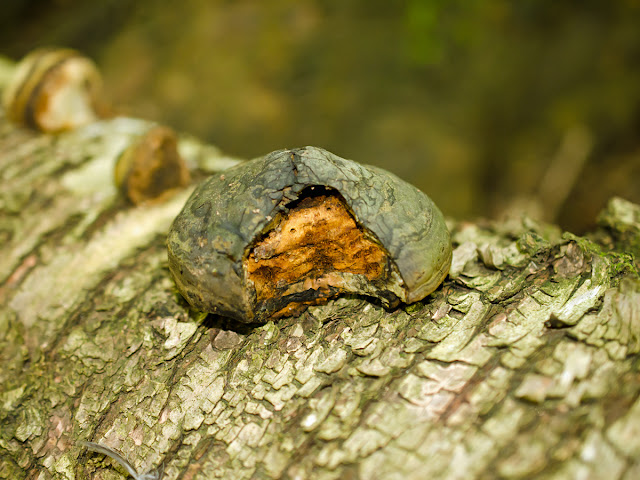In a healthy forest, nothing stays the same; everything is in a state of flux. Sure, a tree may live for 60, 100, 500, even 1000 years, but it is never static. A tree is a community; a forest is a complete world of sprouting, hatching, growing, dying, and birthing living creatures. Everything is reused, reshaped, repurposed.
Take the Watershed Park:
 |
| Cedar grove, surrounded by fast-growing red alder, paper birch, and salmonberries. |
These are third- and fourth-growth trees, youngsters, as trees go. Their ancestors are now the rotting remains of enormous stumps. And they are already self-selecting, the stronger, taller trees hogging the sunlight, crowding out the smaller ones. In this photo, there are skinny logs on the ground; birches and alders mainly. One dead tree still stands, leafless; three or four more are in the process of falling, tipped over but still alive.
Even the dead trees are alive.
 |
| Herb Robert sprouting in a compost of dead leaves and twigs, on a Big-leaf maple. |
 |
| Canker or rot on an old birch, on its way down. |
 |
| Split and hollowed maple, growing moss. |
Heart rot, caused by various fungi, weakens the tree without necessarily killing it. Insects move in, looking for shelter or food; woodpeckers bore holes to feed on the bugs. Sometimes the tree splits, but sometimes it looks solid from the outside, but is completely hollow inside. Red cedar is good at this, and many small animals nest inside, dry and hidden from predators. The list of possible residents is long: squirrels and chipmunks, chickadees, nuthaches, owls and flickers, wood ducks (near water), mice and bats - many bats - and woodrats, woodpeckers of all sorts, and on and on. Even bears; a female bear likes to den high up in a big hollow cedar.
Insects. One word to cover thousands of critters to be found in any forest. In this visit, on a dry day, most were in hiding, but the traces of beetles and wood borers were evident on every tree and log. Broken pieces of bark, pulled away from a trunk, revealed a fine, brown dust, leftovers from many buggy meals. And of course, there were spiders. I found one I do not recognize, and will send my poor photo to the good people at
BugGuide.
 |
| Black and gold spider, under bark. |
I found a centipede, many ants, several millipedes (scooting out of sight in an instant), and eleventy-three woodbugs.
 |
| Under the bark of a fallen tree, something has eaten paths in the cambium. An insect larva, maybe? A slug? |
 |
| Laurie says this is a bitter cherry log. |
I noticed several of these logs. The old bark holds on, shredding but still keeping its shape while the wood inside crumbles to dust. Several of the logs were mostly a hollow bark tube.
BC natives used this bark for binding the joints of tools and the hafts of bows, because it is so tough and long-lasting. It is still used as a decorative accent on basket work.
 |
| In a well-rotted log, something blue, some sort of fungus infestation. |
 |
| Insect larva tunnels in the heartwood of an old fallen tree. |
In a small semi-clearing, we stood amazed. What is
that?
 |
| Is that a man in the tree? Or a mermaid? |
 |
| Zooming in. I think it's a blonde mermaid. |
And the tree is a cedar. It looks like it broke off, many years ago, perhaps in a windstorm, and then sprouted side branches curving upwards to become four new trunks. Cedar branches droop down before they turn upwards again; these bare branches show the pattern well.
What a wealth of critters that tree must house!
 |
| Something green to rest our eyes. Moss on a rotten stump. |




















































